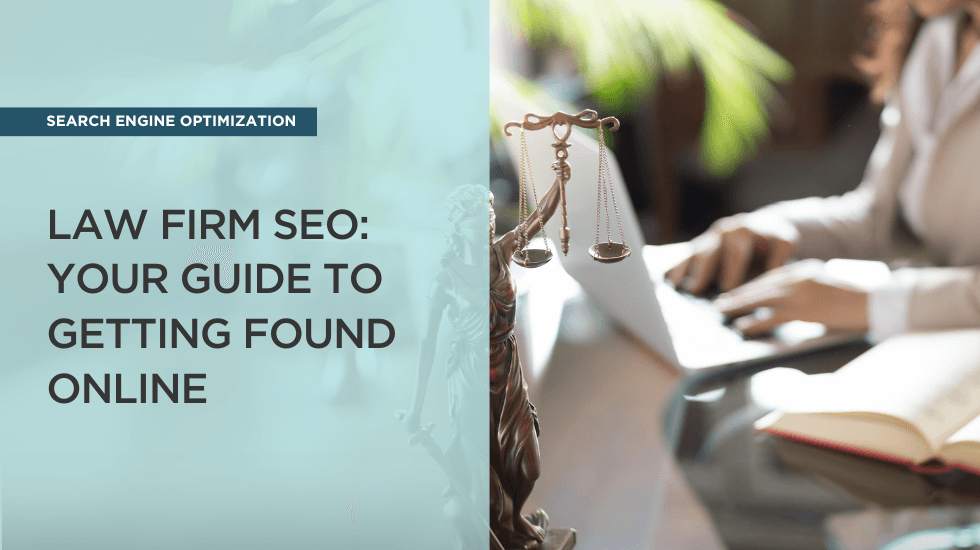At FocusWorks, we know that lawyers love words—and why not? We do too.
The written word is the medium of the law, and every attorney knows the importance of clear, precise communication.
But there’s a major difference between parsing legal texts to help your clients resolve their legal matters and the words that will have new clients eagerly knocking at your door.
And that’s why your law firm’s copy needs to be more than just accurate.
Copy that helps your law firm bring in more leads and sign more clients needs to speak directly to your audience’s needs, how their legal issues are impacting them, and what you can do to solve them—all in language the average person actually understands (and yes, that means a breaking away from the legalese).
Here are eight ways your firm can supercharge your copy and bring in a greater return on your marketing investment.
1. Use empathy, not legalese
Client relationships start with trust, but if your marketing copy is full of dense legalese, guess how they’re going to feel?
Confused, frustrated, and maybe even unintelligent. That’s not a good place to start your relationship.
The goal of your marketing copy is to communicate in a way that’s meaningful for your clients. And legalese? It’s not meaningful to them.
Instead, show your readers that you don’t just know the law, but that you know how legal issues are impacting them. Lead with empathy by using your copywriting to address:
- What are their fears, concerns, or problems?
- How will you help them find solutions to them?
- What will their future look like after you’ve helped them?
Need an example of what that might look like? Check out what we’ve done with the dense legalese in this previous blog.
2. Keep your copy readable and clean
Your ideal leads are often looking for easy solutions to difficult problems, and that means they may be quickly scanning through dozens of pages for answers—including not only your pages but the pages of competing firms.
If you want to give your readers a reason to pause on your site, you need your copy to be attractive, clear, and effortlessly readable.
That’s where the right formatting makes all the difference.
Try to break up long blocks of text wherever possible (word-walls are a pain to read and a chance for your readers’ eyes to gloss over).
You can even break your paragraphs down to one or two punchy sentences. (Do you see what we just did there?)
Large, attention-grabbing headers can also help guide your reader through the piece and make it easier to find the answers they’re looking for.
And when you do need to take a deep dive into the legal nitty-gritty, consider using these techniques to make your text more readable:
- Numbered or bulleted lists (we’re big fans of these at FocusWorks)
- Short, declarative sentences (too many clauses are easy to get lost in)
- Larger, set-aside portions of text highlighting key legal points (make ‘em big and bold so they really stand out)
3. Make sure there’s a strategy in place
We know you’d probably love to share your experience and knowledge for free—but you need to ensure that each piece of content has a purpose.
From the topics you blog about to the audience you target to the your titles, headers, and call-outs, everything about your copywriting plan belonds to a comprehensive, growth-driving marketing strategy.
So before you get started sending new copy out into the world, consider the answers to all of the following questions:
- Who are my ideal clients?
- What are their legal needs, concerns, and pain points?
- What common questions might they be asking?
- How can we answer those questions?
- And, most importantly, what solutions does our firm offer this audience?
Once you have the answers to these questions, you’re ready to start piecing together your strategy. Every piece of copy you publish should speak to your target audience, get ahead of their common complaints and concerns, and give them assurance that your firm has the answers to their problems.
4. Aim for conversion
In practicing law, your goal is always a favorable outcome for your clients, whether that be a favorable court ruling, an air-tight legal contract, or a successful consultation on a business’s legal strategy.
In marketing, your ultimate goal is conversion: the moment when a lead who’s been reading your content signs on with your firm.
No law firm wants to come off as “salesy”—but if you want your copy to actually convert your leads into clients, your readers need a reason to stop what they’re doing and reach out to you.
From a copywriting standpoint, this means offering value. Every piece of content you put out needs to be valuable to your readers.
What does this look like? Let’s dive in.
You probably already have an idea of who your ideal audience is, why they’re reading this particular piece, and what their pain points are.
Your next step is to make yourself the solution. Use this formula for establishing a strong solution-position in your copywriting:
- Here’s the legal issue you may be facing as a reader
- Here’s a common example of why you might be facing this issue
- Here’s why having this issue really is a major problem (this is where you can twist the knife a bit)
- Here’s what you need to know about your legal options (this is where you demonstrate your knowledge as a firm)
- Here’s why you need an attorney (and why we’re the perfect fit for your needs)
Any content you put out should end with a strong call to action. (And don’t forget to link to relevant resources throughout your content, either!)
5. Make the most of your CTAs
If you’ve ever looked at another firm’s copy (or spent any time on the internet, really), you’re probably familiar with those shiny little buttons that say things like learn more, click here, and contact us.
Those are what we in the marketing biz refer to as calls to action (CTAs). A good CTA is what prompts your reader to check out your services, reach out for more information, and (ultimately) sign with your firm.
Not all CTAs are created equal, however. A strong CTA needs to be visually eye-catching and clear in at least three ways:
- It needs to be clear about what the reader will get by taking an action
- It needs to be clear about how the reader can take that action
- It needs to be backed up by context that makes the value of the action clear
It also helps if the CTA’s wording is memorable and specific. “Click here” doesn’t accomplish much except for stating the obvious. Instead, consider specific phrasings like “Get our experienced legal team today.”
You can even make your CTAs specific to your practice area, your audience’s pain points, and the topic of the piece.
6. Compliance is key
The American Bar Association and most state bar associations consider your copy a form of marketing (and it is, after all)—which means there are regulations for what you can and can’t say.
Take the following, seemingly innocuous example: “Hiring an expert divorce attorney will make the whole divorce process less stressful and difficult.”
Seems pretty cut-and-dry on the surface, right? But using this kind of absolute statement could land your firm in hot water.
As an attorney, you’re probably well aware that not every case goes the way you’d prefer. That’s why it’s important to avoid promising results—and why the statement above is a compliance violation.
“Hiring an experienced divorce attorney can often smooth the divorce process” conveys the same value without putting your practice in jeopardy. It’s not a difficult fix, but it could make all the difference for your firm.
This example isn’t the sum total of marketing compliance regulations for law firms, though—each state has their own rules.
We can’t stress this enough: compliance is hugely important for your firm’s standing and reputation. Make sure you, your team, and any marketing professionals you work with know compliance regulations inside and out. (If you need support, just let us know—at FocusWorks Marketing, we stay current on all legal marketing regulations so you don’t have to.)
7. Optimize for SEO
Here’s another tricky marketing secret: even the best, most polished and informative copy in the world won’t help your firm sign clients if nobody finds or reads it.
If you want to get your blogs and service pages in front of the right sets of eyes, you need to make sure your copy’s showing up in search engine results (preferably, somewhere on the first page).
That’s where search engine optimization (SEO) comes in. Put simply, SEO is the practice of using keywords, headers, and page design to make sure your content ranks highly when people search for your services.
Successful SEO relies on thorough keyword research, up-to-date knowledge of search algorithms, and more. If your firm already has a copywriting strategy in place but you aren’t seeing your hard work translate to increased page views and clicks, it may be because you need to work with someone who knows SEO.
8. Consider working with an experienced law firm marketing agency
As attorneys, the people at your firm already have enough on their plates—and there’s no need to waste billable hours becoming a marketing expert. If you don’t know your SEO from your SERPs and ROIs, it might be time to turn to the professionals.
The team at FocusWorks Marketing has years of experience providing informative, readable, growth-driving copy specifically optimized for law firms.
Every one of those steps we just mentioned? We can help your firm do all of that—or we can take the load off your shoulders and do it all for you ourselves.
With our deep industry knowledge and specific focus on law, FocusWorks can provide for all of your law firm’s copywriting needs while also ensuring your copy stays compliant with bar association rules.
If you’d like more information or you’re ready to get started, give us a shout. We’d love to help your firm grow.



